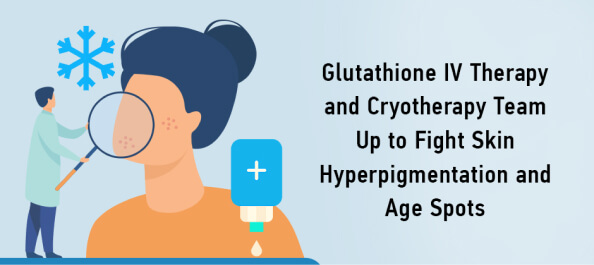
Pigmentation is the mechanism by which your genes express themselves as different shades and colors of skin, hair and eyes. The process of pigmentation is mediated by melanin, a complex polymer derived from the amino acid tyrosine, and pigment cells are called melanocytes.
Melanocyte stimulating hormone (MSH) is the hormone that triggers melanocyte cells to produce the pigmentation responsible for darkening of the skin.
Melanocytes are found in several areas of the human body including:
- Skin
- Hair
- Eyes
- Inner ear
- Substantia nigra and locus coeruleus of the brain
- Adrenal gland
The presence and degree of melanin that accounts for the shade and tone of your skin is genetic, and is determined by the extent of exposure your ancient ancestors had to the sun. But other factors can cause your body to overproduce or underproduce melanin, creating variations in skin pigmentation that are often undesirable.
Hyperpigmentation and Melasma
Hyperpigmentation is a skin condition where certain patches of skin appear darker than your primary skin tone. Certain conditions can cause your body to make excess melanin that shows up as darker dots, spots or patches on your skin. This often happens after prolonged sun exposure, resulting in freckles or a suntan.
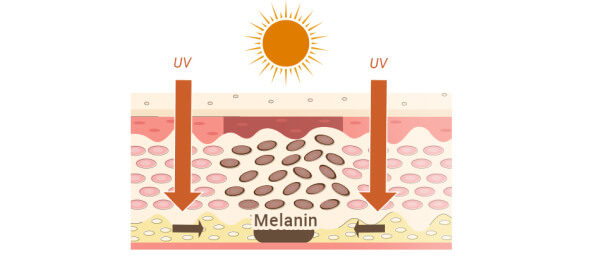
Hyperpigmentation of the facial skin sometimes occurs during pregnancy, a condition known as melasma, aka the “mask of pregnancy.” Melasma appears more often in darker-skinned women, and can appear in dark-skinned men as well, although over 90% of those affected are women. In addition, some people are born with a “birthmark,” which is another form of melasma.
The cause of melasma is not fully understood, but scientists suspect that hormones, UV exposure, chronic inflammation, and genetics may all play a role.
Age Spots
Age spots, sometimes called liver spots, are a form of melasma that appears on aging skin, most often in females. Age spots often appear on your face, hands, arms, back and shoulders. Because melanin synthesis is regulated by estrogen, dropping estrogen levels post-menopause are thought to be the primary triggers of age spots in women.
Exposure to ultraviolet light, like sunlight and tanning beds, is thought to contribute to age spots. The appearance of unsightly age spots may be exacerbated by certain photosensitizing medications, including:
- Oral contraceptives
- Hormone replacement therapy (HRT)
- Antihistamines
- NSAIDs such as ibuprofen (Advil), celecoxib (Celebrex) and naproxen (Aleve)
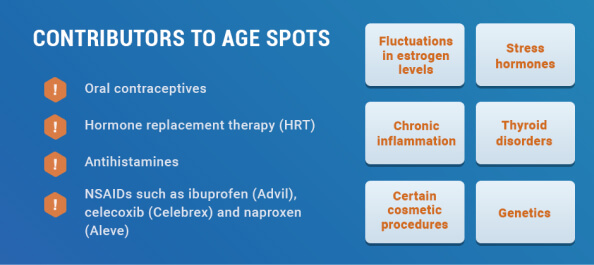
Other potential contributors to age spots include:
- Fluctuations in estrogen levels. Elevated estrogen has been linked to increased skin pigmentation, which explains why pregnant women and women using contraceptives and HRT are more inclined to develop age spots
- Stress hormones. Stress causes your body to release the stress hormone cortisol, which in turn affects your production of estrogen. Elevated estrogen levels upregulate MSH levels, leading to an increase in melanin production that can cause age spots.
- Chronic inflammation. Stress and lifestyle factors can lead to chronic low-grade oxidative stress that affects your melanocytes, causing inflammatory reactions and tissue damage that can trigger age spots.
- Thyroid disorders. Autoimmune thyroid conditions are associated with a higher incidence of melasma.
- Certain cosmetic procedures. Certain cosmetic procedures are designed to deliberately irritate and damage the skin’s outermost layer, to encourage the growth of newer, more elastic skin cells. Procedures like chemical facial peels, intense pulsed light treatment and microdermabrasion can damage melanocytes and stimulate excess pigmentation.
- Genetics. Some individuals are genetically predisposed to melasma, and are more likely to develop age spots later in life.
Preventing Age Spots
Age spots are not inevitable in most people, and you may have more control over them than you think.
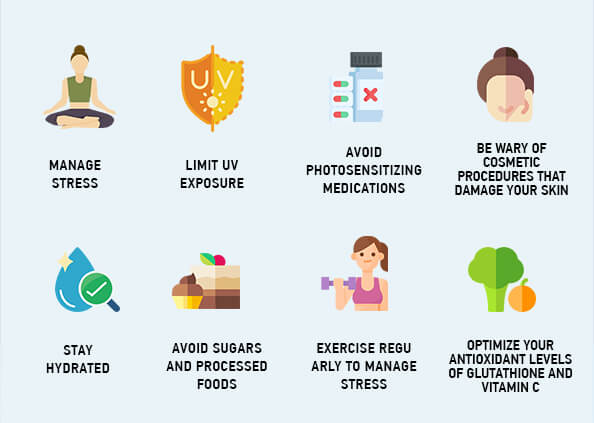
- Manage stress, which can trigger age spots and accelerate the aging process.
- Limit UV exposure, but don’t totally avoid the sun – you need it to produce vitamin D3.
- Avoid photosensitizing medications.
- Be wary of cosmetic procedures that damage your skin.
- Stay hydrated to promote healthy skin cells.
- Avoid sugars and processed foods that can trigger chronic inflammation.
- Exercise regularly to manage stress, regulate hormone production, reduce systemic inflammation, and increase the flow of oxygen and nutrients to your skin cells.
- Optimize your antioxidant levels of glutathione and Vitamin C to fight oxidative stress that can trigger MSH.
Glutathione IV Therapy for Age Spots
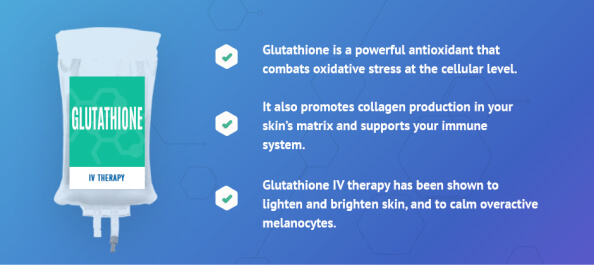
Cellular oxidative stress caused by inflammation, stress and environmental toxins can trigger the overproduction of melanin and cause age spots. Glutathione is a powerful antioxidant that combats oxidative stress at the cellular level. It also promotes collagen production in your skin’s matrix and supports your immune system.
Glutathione IV therapy has been shown to lighten and brighten skin, and to calm overactive melanocytes. Many people with melasma and age spots rely on glutathione IV treatments to even out skin tone and reduce the appearance of age spots and other forms of melasma.
Localized Cryotherapy for Age Spots
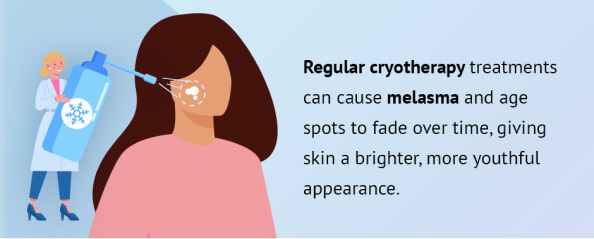
Localized cryotherapy uses liquid nitrogen to apply a stream of subzero temperature gas to the skin’s surface. In response, the capillaries feeding the skin cells constrict, flushing out fluids and toxins and delivering them to the bloodstream to be eliminated. In the process, superficial hyperpigmented cells begin to die, to make way for new cells formed in the skin’s matrix, resulting in lighter-looking skin.
Regular cryotherapy treatments can cause melasma and age spots to fade over time, giving skin a brighter, more youthful appearance. CryoFacial is a form of localized cryotherapy that focuses on facial skin. It combines the pampering benefits of facial creams and massage with targeted cryotherapy, for the optimal facial experience.
Hyperpigmentation and Age Spot Treatment in NYC
Getting rid of unwanted skin pigmentation takes time, but you will see improvements with each session. When you combine local cryotherapy and glutathione IV therapy with lifestyle changes, you can be on your way to smoother, brighter and younger looking skin with a more consistent skin tone.
InVita Cryo NYC offers localized cryotherapy, CryoFacial and Glutathione IV skin whitening therapy at our spa-like Manhattan clinic. Combine your treatments in a single session, to save time and money, and to speed up results. Contact InVita Cryo NYC today, and get ready to look and feel amazing!
Resources
Verdier-Sévrain, S. “Effect of estrogens on skin aging and the potential role of selective estrogen receptor modulators.” Climacteric 10.4 (2007): 289-297.
Zhuang, Yong, and John Lyga. “Inflammaging in skin and other tissues-the roles of complement system and macrophage.” Inflammation & Allergy-Drug Targets (Formerly Current Drug Targets-Inflammation & Allergy)(Discontinued) 13.3 (2014): 153-161.